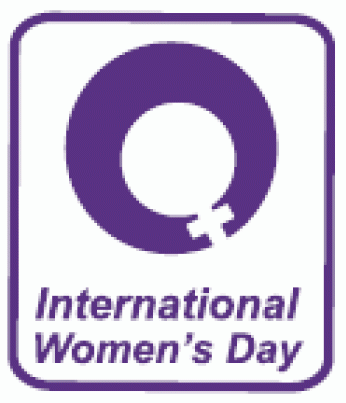Author’s note: This post was commissioned as an IWD blog by the Canadian Museum for Human Rights. It was initially approved and posted by the Museum on 4 March 2014. It was, however, almost immediately withdrawn as ‘Communications’ at the Museum deemed the one line comment on the current federal Conservative government unacceptable as written. The offer of a substantive footnote and illustrative example from the author brought no reply. ActiveHistory.ca has reposted this time-sensitive contribution here, to which examples of anti-women policies and a footnote have been added.
International Women’s Day on 8th March should be a key date in the human rights calendar. Its place is hard-won. When Charlotte Bunch, a leading figure in the creation of UN Women (2010), insisted in 1990 that women’s rights are human rights in the Human Rights Quarterly and Edward Broadbent, from the International Centre for Human Rights and Democratic Development, served in 1993 as a judge in the Vienna Tribunal on Women’s Human Rights, one half of humanity’s entitlement to fair dealing remained globally contested. That struggle continues.
Although recognition that women’s rights are human rights pre-dates even writings of Mary Wollstonecraft (1759-1797) in the western tradition, IWD emerged in 1908 with a mass women suffrage meeting organized by American socialists. By 1911 the idea had reached Europe, where again it persisted as a special interest of the left. Unlike ‘Mother’s Day,’ also first observed in 1908, which celebrated women as maternal and peace-loving, IWD initially concentrated on waged and industrial labour. Early champions such as the German socialist Clara Zetkin (1857-1933) intended to highlight tragedies such as the 1911 New York Triangle Shirtwaist Factory Fire and economic oppression generally. When IWD became an official holiday in Russia after 1917 and in the new People’s Republic of China in 1949, even as both countries failed to offer equality, liberal democracies, not to mention dictatorships, shied away.
Champions of equality, however, persisted. 20th century wars and genocides prompted international action. The United Nations, like the earlier League of Nations, proved influential, producing Conventions on the Political Rights of Women (1952), on the Nationality of Married Women (1957), and on Consent to Marriage, Minimum Age for Marriage and Registration of Marriages (1962). By the 1960s, the second great feminist wave took up the unfinished agenda of fundamental human rights. Its message infused International Women’s Year (1975), the International Decade of Women (1976-85), and the UN Convention on the Elimination of All Forms of Discrimination against Women (CEDAW; 1979).
IWD was another beneficiary. In 1977 the UN encouraged members to proclaim 8th March ‘the UN Day for Women’s Rights and International Peace.’ The linkage of women and peace (remember Mother’s Day) was familiar. Far newer was recognition of violence against women in both war and peace as a major human rights violation. This was not the only shift. By the close of the 20th century, the IWD feminist grassroots in Canada as elsewhere emphasized the role of class, race, sexuality, and (dis)ability in further jeopardizing particular groups. Although Canadians grew increasingly sensitive to human rights, state approval included the threat of cooptation. In 2014 Canada’s Conservative government left its anti-woman record unmentioned (which included withdrawal of plans for a national child care program and major cuts to Status of Women Canada [2006], the prohibition of civil servants taking pay equity complaints to the Human Rights Commission [2009], the denial of international funding for abortion [2010], and major cuts to public services that employ and serve significant numbers of women)[1] as it dedicated IWD week to the ‘valuable contribution of women entrepreneurs.’
For the moment, despite herculean efforts by loyalists, the IWD spirit often resides elsewhere than in official commitments. In 1991, Aboriginal and non-Aboriginal women in Vancouver’s Downtown Eastside inaugurated 14thFebruary as a Day of Remembrance for murdered and missing women. As losses mounted across the country and around the world, that tragic record drew increasing censure. The UN appointed a special rapporteur on violence against women while the Native Women’s Association of Canada and the Canadian Feminist Alliance for International Action provided on-going proof of abuse for the UN CEDAW Committee. In 2014, nation-wide Valentine’s Day protests once again illuminated the plight of particularly disadvantaged women. The Canadian human rights calendar now properly includes the day previously evocative solely of romance.
The 8th of March should not, however, be abandoned. The IWD’s vision of ‘bread and roses’ does not rely on UN approval, for all its value. Like much feminist accomplishment, it has been hard forged on picket lines, in women’s shelters, in political life, and in private homes. With its rich history of resistance and celebration, IWD remains a key marker of how far we have come and how much remains to be done when it comes to women’s human rights in Canada and around the globe. On 8 March 2014, like many others, I will be renewing my commitment to a more just future.
Footnotes
1. For an introduction to this see Sylvia Bashevkin, “Regress trumps progress: women, feminism and the Harper government,” Perspective/FES Washington (July 2012), http://library.fes.de/pdf-files/id/09205.pdf.
Veronica Strong-Boag, the author and editor of many scholarly books and articles, received the Tyrrell Medal for excellence in Canadian history from the Royal Society of Canada in 2012 and is a former president of the Canadian Historical Association. She is a Professor Emerita at UBC and at the moment the Ashley Visiting Professor at Trent.
This blog post is reprinted with permission from activehistory.ca.




